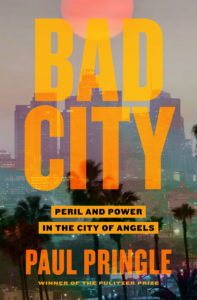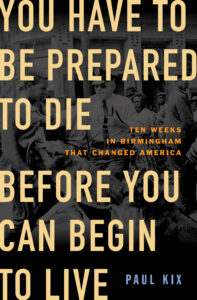With Martin Scorsese’s highly anticipated movie adaptation of David Grann’s Killers of the Flower Moon set to hit theaters, you might be craving an investigative deep dive or a compelling true crime fix. We gathered a few of our favorite books like Killers of the Flower Moon that we know will keep you enthralled.
12 Books Like Killers of the Flower Moon
By Kaitlyn Johnston

These electrifying reads will enthrall you just like Grann’s acclaimed narrative.

Last Call
By Elon Green
An Edgar Award–winning true crime book, Last Call by Elon Green examines the lesser-known case of the Last Call Killer, a serial murderer who terrorized New York City’s queer community in the ’80s and ’90s. Green, a journalist for The Atlantic and The New Yorker, eschews “blood ’n’ guts”–style true crime reporting to craft a striking portrait of the victims, championing the resiliency of the LGBTQ+ community while revealing how a killer’s crimes against a marginalized group went underreported for years. Meticulously told, Last Call is a riveting true story that David Grann hails as “an astonishing and powerful work of nonfiction.”

Bad City
By Paul Pringle
In this acclaimed nonfiction thriller, Pulitzer-winning journalist Paul Pringle recounts how he and his fellow reporters at the L.A. Times went up against one of California’s most powerful institutions — and won. In 2016, an eyebrow-raising lead rolled across the Times journalist’s desk: Dr. Carmen Puliafito, the head of the University of Southern California’s elite medical school, had been involved in a drug overdose at an upscale hotel. Pringle set out to look into the incident, figuring the story would be straightforward enough. Instead, he uncovered a web of criminality and cover-ups that stretched across greater Los Angeles. Told with intriguing behind-the-scenes detail, Bad City is an exceptional work of investigative journalism.

You Have to Be Prepared to Die Before You Can Begin to Live
By Paul Kix
A photo of a police dog lunging at a Black teen in Birmingham, Alabama, 1963. A photo of a police officer kneeling on the neck of a Black man in Minneapolis, Minnesota, 2020. Two pictures, taken nearly six decades apart, that tell tragically familiar stories of racial injustice in America. In You Have to Be Prepared to Die Before You Can Begin to Live, journalist Paul Kix is moved by these harrowing images to chronicle Project C, the pivotal 10-week campaign in 1963 to desegregate Birmingham, Alabama. Led by the Southern Christian Leadership Conference, Project C was a watershed moment for the Civil Rights Movement — it ultimately cleared the way for the passage of the Civil Rights Act of 1964. Yet the story of the campaign had never been fully told until now. With exacting detail, Kix documents each twist and turn of Project C, capturing this critical chapter in American history and offering a fascinating look at the iconic Civil Rights leaders who led the fight: Martin Luther King, Jr., Wyatt Walker, Fred Shuttlesworth, and James Bevel.

Yellow Bird
By Sierra Crane Murdoch
In Yellow Bird, Sierra Crane Murdoch follows Lissa Yellow Bird, an Arikara woman adjusting to life after prison and reckoning with a real-life mystery on her reservation. Released from prison in 2009, Yellow Bird returned to the Fort Berthold Indian Reservation in North Dakota but found it unrecognizable, the tribal government having decided to profit off the Bakken oil boom. When a young white oil worker goes missing, Yellow Bird feels compelled to find out what happened. Murdoch vividly re-creates her subject’s search, offering a look at one woman’s obsessive quest for answers and delivering a powerful portrait of a culture and community in flux.

And Still the Waters Run
By Angie Debo
And Still the Waters Run by Angie Debo documents the history of Oklahoma’s founding and the betrayal of the five independent Native American tribes that once called this region home. In recompense for being forcibly removed from their ancestral lands, the Choctaws, Chickasaws, Cherokees, Creeks, and Seminoles were granted possession of what is now eastern Oklahoma, to be held “as long as the waters run, as long as the grass grows.” With the passage of the Dawes Act of 1887, however, came the opportunity for the federal government and American settlers to renege on prior agreements and swindle the tribes of their holdings. Debo’s work was controversial upon its completion in 1936; the book itself did not receive publication until 1940. Today it stands as an unflinching and impassioned report of a disgraceful era in American history.

Under the Banner of Heaven
By Jon Krakauer
In Under the Banner of Heaven, acclaimed journalist and author Jon Krakauer presents a searing examination of Mormon fundamentalism in Utah. The book centers on Ron and Dan Lafferty, two Mormon fundamentalist brothers who murdered a woman and her child and claimed they were ordered by God to carry out the killing. A finely crafted true crime narrative that doubles as an in-depth interrogation of fundamentalist belief, Under the Banner of Heaven is a gripping report through and through.

The Devil in the White City
By Erik Larson
In 1893, Chicago played host to the World’s Fair, attracting visitors from far and wide with spectacular attractions and revelry. But while Daniel Burnham, the World Fair’s director of works, endeavored to enchant patrons with a once-in-a-lifetime experience, H.H. Holmes took advantage of the event to lure unsuspecting visitors to their doom. Suffused with historical detail and written at the pace of a thriller, Erik Larson’s The Devil in the White City is an extraordinary narrative nonfiction book that evokes the promise and peril of America at the dawn of the 20th century.

Dopesick
By Beth Macy
In Dopesick, Beth Macy traces the opioid epidemic from pharmaceutical labs to doctors’ offices to high school football locker rooms. Macy’s investigation captures the astonishing scope of the crisis, revealing the impact of overmedicating with painkillers and the spread of addiction from rural Appalachia to white-collar suburbia. Both distressing in its findings and impressive in its journalistic prowess, Dopesick is an urgent work of narrative nonfiction that interweaves stories of struggling communities with reports of unchecked corporate greed and corruption.

I’ll Be Gone in the Dark
By Michelle McNamara
In I’ll Be Gone in the Dark, true crime journalist Michelle McNamara chronicles her obsessive search for the Golden State Killer, a serial murderer and sexual predator who evaded capture for decades. (Readers can dive deeper into the investigation and how the killer was eventually captured in Unmasked, a memoir by detective and McNamara collaborator Paul Holes.) Drawing on a wealth of investigative research, interviews with victims, and her immersion into online true crime communities, McNamara delivers a haunting examination of a criminal and the wake of devastation he left behind. The New York Times calls it “both a vivid and meticulous investigation of a twisted predator…and a wrenching personal account from a writer who became consumed by her subject.”

Say Nothing
By Patrick Radden Keefe
In Say Nothing, award-winning journalist Patrick Radden Keefe offers a sweeping history of the Troubles, the vicious guerrilla conflict that consumed Northern Ireland from the late 1960s to 1998. Opening with the 1972 abduction of a widowed mother of 10, Keefe details the climate of paranoia, fear, and discontentment that blanketed the region at the time. Written with power and compassion, Say Nothing offers perspectives from every side of the conflict.

The Professor and the Madman
By Simon Winchester
In The Professor and the Madman, Simon Winchester depicts one of humanity’s greatest achievements: the creation of the Oxford English Dictionary. The narrative introduces us to Professor James Murray, the man who helmed the making of the dictionary, and Dr. W.C. Minor, the project’s biggest contributor of definitions — he was personally responsible for more than 10,000. While that was surprising enough, Murray and his team had a second shock when they learned that Dr. Minor also happened to be an inmate at an asylum for the criminally insane. A fascinating account of ambition and obsession, The Professor and the Madman is an engrossing read that explores “the fine line between sanity and madness” (Wall Street Journal).

Empire of the Summer Moon
By S.C. Gwynne
Empire of the Summer Moon, an award-winning nonfiction narrative by journalist S.C. Gwynne, tells the story of the Comanches and their decades-long battle for control of the American West. A tribe of elite warriors, skilled on horseback and accurate with their weaponry, the Comanches were a powerful force who drove back advancing colonial forces and frontier settlers. Alongside Gwynne’s stirring Comanche history, the author tells the story of pioneer woman Cynthia Ann Parker and her mixed son, Quanah Parker, who rose to become the last chief of the free Comanches. Impeccably researched and told with a gripping narrative flare, Empire of the Summer Moon is a must-read for American history buffs and journalism junkies alike.
Share with your friends
Facebook
Twitter
LinkedIn
Pinterest
Related Articles
These revelatory reads are sure to expand your mind.
These books capture the highs, lows, and boundless joys of fatherhood and the father–child bond.
Need a captivating new nonfiction narrative for your history book club? The following history books span the centuries, presenting fascinating true-life accounts from WWII-era survival sagas and rousing portraits of unsung American heroes to world-changing episodes from our distant past. They’re certain to inspire plenty of discussion among your history book club crew about the momentous events of yesteryear and what we can learn from them today.
Celadon delivered
Subscribe to get articles about writing, adding to your TBR pile, and simply content we feel is worth sharing. And yes, also sign up to be the first to hear about giveaways, our acquisitions, and exclusives!
Celadon delivered
"*" indicates required fields



